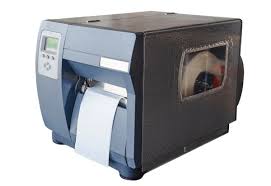
Maximizing Efficiency with Industrial Printers
Choosing the right labels and ribbons can make all the difference in printing. One of the key considerations that often goes unnoticed but plays a critical role is the core size of labels, particularly the 3" core labels. In this deep dive, we'll explore why industrial printers go better with 3" core labels and thermal transfer ribbons, uncovering their advantages and shedding light on how they significantly enhance printing efficiency and durability across diverse industries.
The Heart of Industrial Labeling: 3" Core Labels
Understanding the Core
The core size of labels might seem like a technical detail, but it's a crucial factor in industrial printing. The 3" core labels, with their larger spindle size, are designed for industrial printers. This compatibility ensures smooth operations and reduces the frequency of label changes, a factor that directly impacts overall efficiency.
Picture a production line where every second counts. With 3" core labels, industrial printers can handle larger label rolls, minimizing the need for frequent roll changes. This not only saves time but also reduces downtime, allowing for uninterrupted printing processes. Whether you're dealing with high-volume manufacturing or complex logistics operations, the efficiency gains from fewer roll changes can be a game-changer.
Industrial printers are built to handle high-speed printing to keep up with the demands of large-scale operations. The 3" core labels provide enhanced stability during high-speed printing, preventing issues such as label jams and ensuring consistent print quality. This stability is particularly crucial in industries where precision and speed go hand in hand, such as shipping, logistics, and manufacturing.
Thermal Transfer Ribbons
Unveiling the Secret Behind Durability
While labels are the face of the product, thermal transfer ribbons play a behind-the-scenes role in ensuring durability and longevity. These ribbons are designed to withstand harsh conditions, making them ideal for industrial applications where labels are exposed to extremes of temperature, moisture, and physical abrasion.
How Thermal Transfer Technology Works
Unlike direct thermal printing, where the label darkens when exposed to heat, thermal transfer printing involves the transfer of ink from the ribbon onto the label. This process results in a more robust and long-lasting print, making it suitable for applications requiring resistance to fading, smudging, and environmental wear and tear.
One of the standout features of thermal transfer ribbons is their compatibility with various label materials, including paper, synthetic materials, and even specialty materials for unique applications. This versatility allows industrial printers to choose the most suitable label material for their specific needs without compromising on print quality or durability.
3" Core Labels and Thermal Transfer Ribbons
Achieving Optimal Efficiency
When 3" core labels and thermal transfer ribbons join forces, the result is a printing powerhouse that maximizes efficiency across industrial operations. The larger core size accommodates longer ribbons, reducing the frequency of ribbon changes. This not only streamlines the printing process but also minimizes the risk of errors associated with manual interventions.
Cost-Effective and Sustainable Printing Solutions
Cost-effectiveness is a key consideration. The synergy between 3" core labels and thermal transfer ribbons leads to cost savings by reducing material waste and operational downtime. Additionally, the durability of thermal transfer printing means fewer reprints and replacements, contributing to a more sustainable and eco-friendly printing process.
Final Thoughts
As industries continue to evolve and demand higher standards of performance, 3" core labels and thermal transfer ribbons stands as a bold innovation in industrial printing. By understanding the importance of these printing components, businesses can make informed decisions that propel them toward enhanced efficiency and, ultimately, success in their respective industries.
